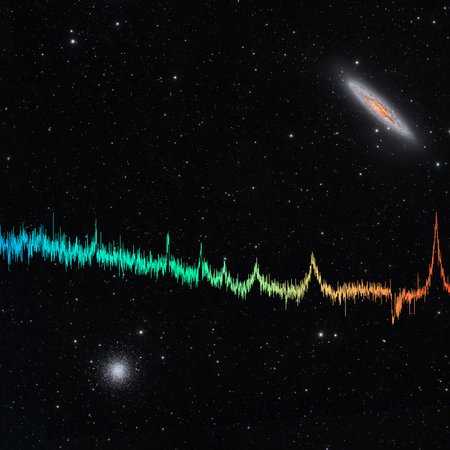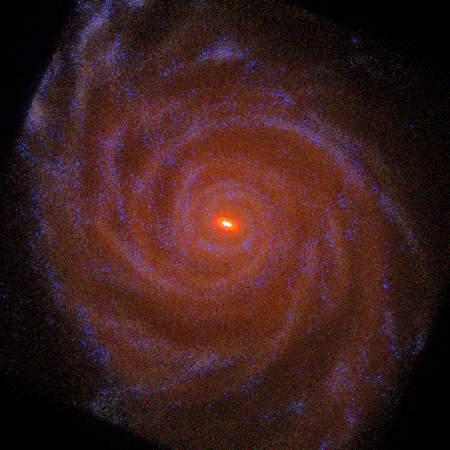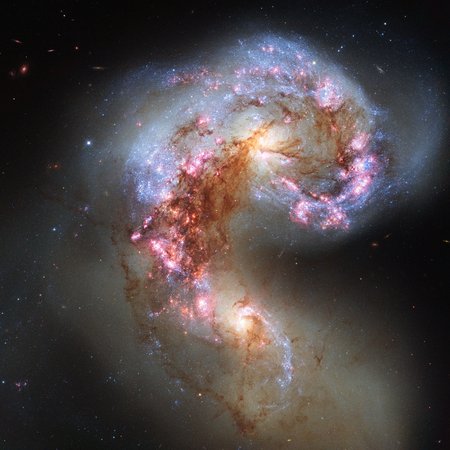Facets of Solar Magnetic Fields

High-resolution G-band images. bright points, pores, an emerging flux region, and a sunspot with umbral dots and light-bridges. The data were captured with the Blue Imaging Channel (BIC) of the GFPI in July 2014.
Credit: AIPMagnetic fields on the solar surface come in many shapes and sizes. The smallest magnetic flux elements become visible in the Fraunhofer G-band, a narrow spectral region with many molecular lines at around 430.6 nm, as bright points – sometimes aligned in chains and arcs. Once the magnetic flux is sufficiently strong to inhibit the convective energy transport from the solar interior to the solar atmosphere, dark structures begin to develop, which are called solar pores.
Magnetic flux ropes generated in the solar interior can become buoyant and start to rise. When such a flux loop reaches the surface, a bipolar emerging flux region (EFR) appears in the photosphere. The EFR represents the intersection of the inverse U-shaped flux bundle with the solar surface. However, only a small fraction of sunspots grows beyond this stage and matures to develop a penumbra with a radial filamentary structure that surrounds the dark core of the sunspot. This umbra can contain bright umbral dots and dark umbral cores, which are separated by bright, elongated light-bridges. One of the prime objective of the newly commissioned 1.5-meter GREGOR solar telescope is to investigate the interaction of magnetic fields and plasma motions at the highest spatial and temporal resolution.
The “early science phase” of the GREGOR solar telescope started in May 2014 using the Grating Infrared Spectrograph (GRIS). The Leibniz Institute for Astrophysics Potsdam (AIP) is in charge of the GREGOR Fabry-Pérot Interferometer (GFPI), an imaging spectropolarimeter for high-resolution photospheric and chromospheric observations. AIP’s research group for Optical Solar Physics organized a 50-day observing campaign in July/August 2014, where all members and partners of the GREGOR consortium proposed scientific tasks, which were then jointly carried out by a team of experienced observers at Observatorio del Teide, Izaña, Tenerife. Data processing is in full swing and the initial outcome indicates excellent performance of telescope and instruments. First scientific results will be presented at the fall meeting of the Astronomische Gesellschaft in Bamberg on 2014 September 25/26 in a special forum dedicated to “High-Resolution Solar Physics”.
The 1.5-meter GREGOR solar telescope was built by a German consortium under the leadership of the Kiepenheuer Institute for Solar Physics in Freiburg with the Leibniz Institute for Astrophysics Potsdam, the Institute for Astrophysics Göttingen, and the Max Planck Institute for Solar System Research in Göttingen as partners, and with contributions by the Instituto de Astrofísica de Canarias and the Astronomical Institute of the Academy of Sciences of the Czech Republic.
Media Contact: Kerstin Mork , +49 331 7499 469, presse@aip.de
Images
High-resolution G-band images. bright points, pores, an emerging flux region, and a sunspot with umbral dots and light-bridges. The data were captured with the Blue Imaging Channel (BIC) of the GFPI in July 2014.
Big screen size [1000 x 412, 150 KB]
Original size [2180 x 900, 530 KB]



